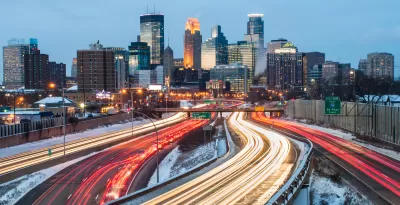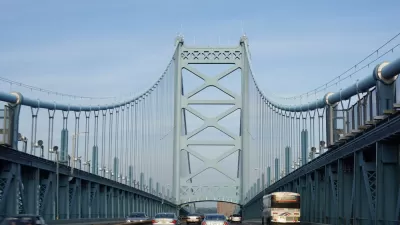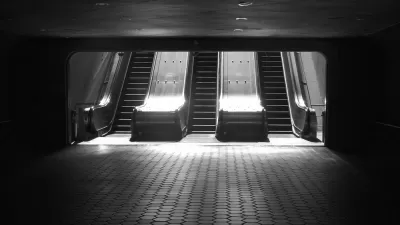An Star Tribune analysis finds residents in the Twin Cities region are generously supporting the transportation infrastructure spending of the rest of the state.

"Greater Minnesota gets far more money for roads and bridges than its residents pay in taxes for those projects, a new Star Tribune analysis of transportation funding has found," report J. Patrick Coolican and Mary Jo Webster. Throughout the article, the "Metro" is used to describe counties in the Twin Cities metropolitan area, while "Greater Minnesota" is used to describe the rest of the state.
"The review found that metro and greater Minnesota taxpayers each provide about half the money for Minnesota’s roads and bridges, but greater Minnesota gets twice as much back in projects," add Coolican and Webster. To be exact, Metro area counties generate 52 percent of the state's vehicles sales tax, vehicle registration fees, and fuel taxes revenues. However, the same counties only receive 32 percent of the state's transportation investment.
According to the article, the findings of the analysis "contradicts a commonly held perception in greater Minnesota — and one heard often in political campaigns — that the metro is taking more than it gives." That common misconception is not unique to Minnesota, of course.
The analysis emerges as Republican Senate leaders "are planning to review their 10-year transportation funding plan," and while debate regarding the Southwest light rail project continues at the state and regional levels.
FULL STORY: Metro contributes roughly half of state transportation dollars, gets fewer in return

Alabama: Trump Terminates Settlements for Black Communities Harmed By Raw Sewage
Trump deemed the landmark civil rights agreement “illegal DEI and environmental justice policy.”

Planetizen Federal Action Tracker
A weekly monitor of how Trump’s orders and actions are impacting planners and planning in America.

Why Should We Subsidize Public Transportation?
Many public transit agencies face financial stress due to rising costs, declining fare revenue, and declining subsidies. Transit advocates must provide a strong business case for increasing public transit funding.

Judge Orders Release of Frozen IRA, IIJA Funding
The decision is a victory for environmental groups who charged that freezing funds for critical infrastructure and disaster response programs caused “real and irreparable harm” to communities.

‘Clybourne Park’ Sets Stage for Housing Equity Discussions
Clybourne Park, a play exploring race, real estate, and community tensions, can set the stage for discussion on the lasting impacts of housing discrimination, gentrification, and the fight for affordability.

Understanding Road Diets
An explainer from Momentum highlights the advantages of reducing vehicle lanes in favor of more bike, transit, and pedestrian infrastructure.
Urban Design for Planners 1: Software Tools
This six-course series explores essential urban design concepts using open source software and equips planners with the tools they need to participate fully in the urban design process.
Planning for Universal Design
Learn the tools for implementing Universal Design in planning regulations.
Caltrans
Smith Gee Studio
Institute for Housing and Urban Development Studies (IHS)
City of Grandview
Harvard GSD Executive Education
Toledo-Lucas County Plan Commissions
Salt Lake City
NYU Wagner Graduate School of Public Service





























